Tag: Work Out

The Best Time to Work Out for Muscle Growth
Building muscle takes time, energy, and dedication, and your diet must be on point, too. Even then, unless you are very genetically blessed, increasing muscle size is a slow and laborious process.
Most people are lucky if they gain a pound of muscle per month.
Because of this, it makes sense to try and make your workouts as effective and efficient as possible. Supplements like creatine and pre-workout can help, and following a hypertrophy-specific training program is obviously a must.
There may also be an optimal time to work out for muscle growth. We investigate how your workout time may affect your muscle-building gains.
Early Morning Workouts for Muscle Growth
Many exercisers like to start their day with a workout, and numerous famous bodybuilders favor morning training, including the Austrian Oak Arnold Schwarzenegger, who still prefers his workouts bright and early.
Training early in the morning offers several advantages and benefits, including:
You make training your priority, getting it done before other tasks can disrupt your day.
Gyms are often quieter first thing in the morning.
It takes less time to get to the gym as the roads are not as busy.
Some people feel more energetic early in the morning.
Early-morning exercisers tend to be more consistent.
Morning workouts leave you free to enjoy the rest of your day.
There are more opportunities for post-workout meals.
You can still train later in the day if you miss your morning workout.
However, there are downsides to early morning workouts, too:
It may take you longer to warm up.
You may not feel as strong or energetic.
Blood glucose and muscle glycogen levels may be lower than usual.
Serum testosterone levels tend to be lower first thing in the morning (1).
A good-sized pre-workout meal may be impractical.
Some exercisers are not “morning people” and are reluctant to get up early.
You’ll need to go to bed early to ensure that you get sufficient sleep.
Developing an early-morning workout habit is not always easy.
But what does the science say about early morning training for muscle building? The answer is not clear-cut, as you can make gains no matter what time of day you train.
That said, some studies suggest that early morning workouts may not be ideal for strength and hypertrophy gains. For example, a 2016 study from Finland determined that strength and endurance training produced better results when performed in the evening and not in the morning (2).
This result was mirrored by an earlier study that found muscle strength and power tended to be lower during early morning workouts (3). However, that same study also suggested that ingesting caffeine could mitigate many of the downsides of early morning training.
Working Out Later in The Day for Muscle Growth
Not a morning person? That’s okay! Many people find the idea of training shortly after waking a nauseating prospect. They’re too sleepy, stiff, and tired to get a good workout. The good news is that there are plenty of benefits to working out later in the day:
Most people feel warmer and more awake.
Strength/power levels tend to be marginally higher (4).
You’ll have eaten several pre-workout meals.
You won’t feel rushed to complete your workout before heading to work or school.
You can go home and relax once your workout is finished.
Your evening meal will also be your post-workout meal.
Gyms tend to more vibrant and energized later in the day.
Of course, there are disadvantages to training later in the day, too:
You may feel tired after a day at school or work.
The gym will be busier, which may disrupt your workout.
The tasks of the day may delay or even prevent you from working out.
There are fewer opportunities to catch up on missed workouts.
Fewer opportunists for post-workout meals.
Training at night can disrupt your sleep.
Training in the evening may mean saying “no” to social engagements.
There are more demands on your time, so you may be more tempted to skip your evening workout, e.g., family dinners, date nights, etc.
Unsurprisingly, the same studies that suggest early morning workouts are less favorable for building muscle and strength also support training later in the day. Most studies recommend a training window of 4 to 8PM.
AM vs. PM Workouts for Muscle Growth
So, while some studies do support PM vs. AM training for muscle growth, evidence also supports morning training. Go to any gym at 6 AM, and you’ll see people who have achieved outstanding results by working out early.
And don’t forget actor Mark Wahlberg and his famous 4 AM workouts! Despite being in his 50s, Wahlberg is in amazing shape and does all of his training at the “wrong” time.
So why do some people get on so well with early morning workouts while others cannot lift a weight before 4 PM?
Good question!
It’s probably because of something called your chronotype, which is the scientific term for whether you are a morning or an evening person. In fact, studies suggest that some people are genetically programmed to respond well to morning workouts (5). Conversely, some people come awake later in the day and are better suited to PM workouts.
So, if early morning workouts ARE less effective than training later in the day, any differences are marginal. In fact, a 2019 meta-analysis comparing the results of 11 training time studies revealed no discernable difference between morning and evening workouts (6).
In all likelihood, the best time to train for muscle growth is the time that suits you. If early morning workouts feel good and fit your schedule, then stick with them. In contrast, if you come alive later in the day and feel stronger in the afternoon and early evening, then that is the time to train.
How do you know if you are an AM or PM person? Try working out at different times of the day and see which you prefer!
However, it’s worth noting that you can acclimate yourself to working out at almost any time of the day (7). It’ll take a few weeks, but you can turn an evening workout habit into a morning one or vice versa. It seems that your chronotype is not set in stone, and it is actually a trainable characteristic.
So, if you are forced to train at a time that doesn’t feel natural, stick with it, and you’ll eventually get used to it. Any decline in performance will gradually vanish, and the time of day won’t affect your training results.
Best Time to Work Out – FAQs
Do you have questions about the best time to work out for muscle growth? That’s okay because we’ve got the answers!
1. So, what IS the best time to work out for muscle growth?
While some studies indicate that training later in the day is better for muscle growth, others suggest that workout timing doesn’t really matter. Instead, it’s more of a personal choice and depends on whether you are a morning person or an evening person, which is called your chronotype.
If you are the sort of person who wakes up feeling full of energy and ready for action, you will probably do well with AM workouts. But, if you feel sluggish in the morning and it takes you several hours to feel your best, PM workouts will probably suit you better.
However, it’s worth noting that you can train yourself to become a morning or evening person simply by pushing yourself through workouts at the “wrong” time. Gradually, you’ll get used to training at a different time of day.
So, ultimately, the best time of day to work out for muscle growth is a) when you feel best and b) whenever you can train reliably and consistently. The so-called right time could be the wrong time if you cannot stick to it.
2. What should I eat before an early morning workout?
One of the main benefits of training later in the day is you can eat several times before you hit the gym. This ensures your muscle glycogen levels are maxed out, so you can train as hard and as long as you want to.
Unless you get up several hours before your workout, this is not possible with early morning workouts.
One way around this is to consume your pre-training meal the night before. Just make sure you eat a good balance of carbohydrates, proteins, and fats, and you’ll be good to go.
You can then top up your energy with a fast-acting snack shortly after rising, such as a sports drink, energy bar, or energy gel. Alternatively, a small bowl of breakfast cereal or a ripe banana will suffice.
You can also ingest some caffeine which, studies suggest, can boost your energy during early-morning workouts (3) and may even reset your circadian rhythm, helping you to become more of a morning person.
3. Do early morning workouts burn more fat?
Studies suggest you may burn more fat when you do cardio on an empty stomach, i.e., fasted (8). However, if training on empty reduces your workout duration or intensity, this benefit is lost.
That said, strength training uses more glycogen than fat, so lifting weights while fasted probably won’t help you burn more fat. In fact, it could impair your performance, making your workout less effective for building muscle and strength.
By all means, give fasted strength training a try, but if you are serious about building muscle, you’ll probably have a better workout with some fuel in the tank.
4. Are early morning workouts safe?
Early morning workouts are perfectly safe, provided you take a few small precautions. For example, after sleeping for the night, your spine is slightly elongated and relaxed. As such, you should warm up thoroughly before loading it, i.e., doing heavy squats or deadlifts.
Also, your blood glucose may be a little lower than usual, which could lead to symptoms of mild hypoglycemia, e.g., feeling weak, dizzy, or nauseous. You could also be slightly dehydrated. These problems can be avoided by drinking plenty of water before and during your workout and having a fast-acting high-carb snack before you hit the gym.
If you are unused to early morning workouts, ease yourself in by reducing exercise intensity and duration for your first few training sessions. You can work harder and longer as your body gets used to your new routine.
5. Is working out at different times on different days okay?
While a consistent workout schedule is usually easier to maintain, it is not always possible. For example, working rotating shifts, family commitments, or school projects may mean you have to train early some days and later on others.
If this is the case, you’ll have to roll with the punches and make the best of your situation. However, you should avoid doing an intense training session one night and another tough workout the following morning. This might be too much to recover from, especially if you are sleep-deprived.
Ultimately, even a less-than-perfect training schedule will work if you stick to it and is preferable to missing workouts.
Closing Thoughts
Many exercisers are guilty of majoring in the minors. In other words, they spend too much time worrying about barely relevant details while ignoring the big picture. Some spend so long comparing and researching their workout and diet options that they don’t have any time left to go to the gym!
So, while some studies may suggest that training later in the day can improve your hypertrophic results, the benefits are marginal. Interestingly, other studies even indicate that there is no difference between AM and PM training.
With that in mind, you should stop worrying about the benefits and drawbacks of AM vs. PM training and work out at the time that suits you. For some, morning workouts are best, while others will prefer to train later in the day.
What matters most is that you work out hard and often. After all, that’s what builds bigger, stronger muscles.
References:
Crawford ED, Poage W, Nyhuis A, Price DA, Dowsett SA, Gelwicks S, Muram D. Measurement of testosterone: how important is a morning blood draw? Curr Med Res Opin. 2015;31(10):1911-4. doi: 10.1185/03007995.2015.1082994. Epub 2015 Sep 11. PMID: 26360789. https://pubmed.ncbi.nlm.nih.gov/26360789/
Küüsmaa M, Schumann M, Sedliak M, Kraemer WJ, Newton RU, Malinen JP, Nyman K, Häkkinen A, Häkkinen K. Effects of morning versus evening combined strength and endurance training on physical performance, muscle hypertrophy, and serum hormone concentrations. Appl Physiol Nutr Metab. 2016 Dec;41(12):1285-1294. doi: 10.1139/apnm-2016-0271. PMID: 27863207. https://pubmed.ncbi.nlm.nih.gov/27863207/
Mora-Rodríguez R, García Pallarés J, López-Samanes Á, Ortega JF, Fernández-Elías VE. Caffeine ingestion reverses the circadian rhythm effects on neuromuscular performance in highly resistance-trained men. PLoS One. 2012;7(4):e33807. doi: 10.1371/journal.pone.0033807. Epub 2012 Apr 4. PMID: 22496767; PMCID: PMC3319538. https://www.ncbi.nlm.nih.gov/pmc/articles/PMC3319538/
Mirizio GG, Nunes RSM, Vargas DA, Foster C, Vieira E. Time-of-Day Effects on Short-Duration Maximal Exercise Performance. Sci Rep. 2020 Jun 11;10(1):9485. doi: 10.1038/s41598-020-66342-w. PMID: 32528038; PMCID: PMC7289891. https://pubmed.ncbi.nlm.nih.gov/32528038/
Vitale JA, Weydahl A. Chronotype, Physical Activity, and Sport Performance: A Systematic Review. Sports Med. 2017 Sep;47(9):1859-1868. doi: 10.1007/s40279-017-0741-z. PMID: 28493061. https://pubmed.ncbi.nlm.nih.gov/28493061/
Grgic J et al. The effects of time of day-specific resistance training on adaptations in skeletal muscle hypertrophy and muscle strength: A systematic review and meta-analysis. Chronobiol Int. 2019 Apr;36(4):449-460. https://pubmed.ncbi.nlm.nih.gov/30704301/
Pengelly M, Elsworthy N, Guy J, Scanlan A, Lastella M. Player Chronotype Does Not Affect In-Game Performance during the Evening ( >18:00 h) in Professional Male Basketball Players. Clocks Sleep. 2021 Nov 29;3(4):615-623. doi: 10.3390/clockssleep3040044. PMID: 34940023; PMCID: PMC8700237. https://www.ncbi.nlm.nih.gov/pmc/articles/PMC8700237/
Aird TP, Davies RW, Carson BP. Effects of fasted vs. fed-state exercise on performance and post-exercise metabolism: A systematic review and meta-analysis. Scand J Med Sci Sports. 2018 May;28(5):1476-1493. doi: 10.1111/sms.13054. Epub 2018 Feb 23. PMID: 29315892. https://pubmed.ncbi.nlm.nih.gov/29315892/
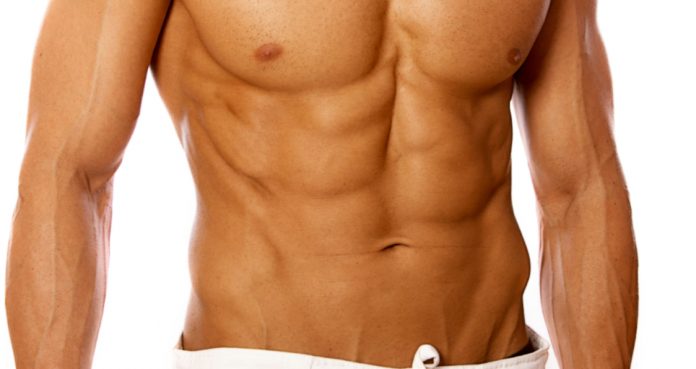
Get A Shredded Midriff With This Ab Workout
Get A Shredded Midriff With This Ab Workout
Washboard abs are hard to get. This is why only a few people have them. It takes patience, persistence, and an iron will to get a shredded core. You have to focus on your training and nutrition if you want to build a six-pack.
While it is true your diet plays a big role in building abs, you can’t overlook the importance of your workouts. A balanced diet can help you reduce your weight and body fat percentage and your ab workouts will help you get a shredded midriff.
1. Hanging Leg Raises – 3 Sets 20 Reps
Hanging leg raises are a great way to start your ab workout. It will help exhaust your abdominals at the beginning of your workout. This exercise helps target your lower abs which hold the stubborn body fat.
Most people make the mistake of swinging their bodies while performing this exercise. You need to keep your upper body at a fixed position and only move your legs. Bring up your legs so they’re parallel to the floor. Keep the movement slow and deliberate.
2. Cable Crunches – 3 Sets 20 Reps
Using cables in your ab workout helps you maintain a constant tension on your midriff throughout the exercise. Cable crunches work the upper and middle abdominal muscles and will leave you with an incredible pump by the end of this exercise.
Attach a cable extension to the pulley. Kneel down facing the pulley and hold the cables at the sides of your neck. Perform a crunch and try touching your knees with your elbows. Squeeze your midsection at the bottom of the movement.
3. Russian Twists – 3 Sets 20 Reps
Obliques are the most overlooked muscle group when it comes to ab training. Obliques give your abs the shredded and peeled look. If you find this exercise easy, use weights to add resistance. Russian twists also help with developing the V-cut in your lower abdominals.
Sit with your feet lifted about six inches off the ground. Hold a dumbbell or a weight plate in front of your chest. Turn to your right side, exhale and squeeze your oblique. Return to the starting position and repeat for the left side.
4. Planks – 3 Sets 1 Minute Each
Planks have earned a name for themselves around the world for their effectiveness. They are incredibly effective at giving you a tight and firm core. Planks also help with building strength and conditioning your midriff. Increase the time as you get better at this exercise.
Many people make the mistake of letting their crotch hang low or forming a bridge by lifting their butt too high. This takes the tension off your core. Make the most of this exercise by holding your body in a straight line and keeping your core tight.
5. Decline Crunches – 3 Sets 30 Reps
Crunches are the staple exercise in most ab workouts. Crunches work the upper and middle abdominals, but performing the crunches on a decline bench will target your lower abs as well. If 30 reps are too easy, feel free to use weights.
Crunches aren’t just about going through the motions. Inhale while you’re at the bottom of the movement and exhale and squeeze your abs while you’re at the top of the movement. Keep your hands at the back of your head throughout the movement.
Which is your favorite ab exercise? Let us know in the comments below. Also, be sure to follow Generation Iron on Facebook and Twitter.

Use The Dumbbell Pullover For Monster Chest & Back Gains
A classic to build your chest and back.
It’s an exercise that many people seem to leave out of their routines these days; the dumbbell pullover. Since bodybuilding and fitness became a part of popular culture, training and developing the chest muscles have always been considered the most important muscle to be worked on for the adult male. It’s practically the symbol of manliness anywhere you go. But what is sometimes forgotten about the dumbbell pullover is also the idea of the back and how this exercise can improve both chest and back gains.
So, why the argument for the dumbbell pullover? Well, when you have all the old school pros swearing by the exercise then it may be time to take notice. Frank Zane, Dorian Yates, Ronnie Coleman, and Arnold Schwarzenegger have all sung the praises of this all-time classic. Besides working the chest, all these top bodybuilders have claimed to receive great back gains from the exercise, particularly the lats. The range of motion you can get with this exercise effectively works the entire upper body ensuring some solid gains.
You may be wondering about the rumor that this classic workout can do some serious damage to your shoulders. That may be true when you first start out, particularly when you don’t have the form down and you’re using considerable weight. But all in all, with controlled movements and light to moderate weight, especially for beginners, you won’t be putting too much stress on your shoulders when performing the movement. It’s all about technique, which we will get to shortly.
Let’s dive into the dumbbell pullover and see why this exercise is so great. There are tons of reasons why this should be in your routine and we’ll break down for you all of those benefits you want to see most and why this should absolutely be a part of your overall routine.
Muscles Worked & Benefits Of The Dumbbell Pullover
For the dumbbell pullover, this exercise works multiple muscles, mainly your lats and chest. But what you will see with something like this are secondary muscles that will get great work done as well. Those arm muscles, more specifically your triceps, will see work get done as this muscle works to stabilize your arm and provide the best for this movement. But on the whole, this is effective for building your lats and chest.
Those seeking great benefits will notice that this exercise can provide for quite a few. You want an exercise that will do more than just build muscle, although that is highly important. But something like the dumbbell pullover can do this and much more and is a great way to see gains while also supporting your physical health and improving other lifts.
Benefits of the dumbbell pullover include:
Building muscle: This exercise will work to build strength and size in your back and chest by working those muscles, increasing resistance, and giving them a chance to grow. All in all, this is a great exercise for building sports specific and functional muscle.
Work secondary and stabilizer muscles: With this exercise working secondary muscles, you will see those smaller, often forgotten stabilizer muscles get good work done. This will only enhance your overall gains, even if they aren’t the ones to traditionally make a physique pop.
Increase flexibility and mobility: Working with this exercise and having your shoulder be a pivotal point of movement, you improve the range of motion while also increase flexibility and mobility for the best gains possible.
Enhance stability: With increased muscle and better flexibility and mobility, you start to build all-around gains leading to more stability. Plus, an increase in chest and back strength work for full body stability as these are obviously two large muscles.
How Best To Perform The Dumbbell Pullover
Here are the steps for performing the dumbbell pullover effectively (1). It is important that you work to perform this with the best technique so you see great gains while also keeping yourself safe from injury, or at the very least unwanted pain.
Lie flat on a bench with your feet firmly planted on the ground in front of you. Grab your desired dumbbell of choice.
Engage your core and lift the dumbbell so it is above your chest. Be sure to keep your feet as firm on the ground as possible.
When ready, gently lower the dumbbell over your head, keeping your core engaged and a slight bend in the elbow, although your arms will be almost straight.
Once the weight is near your ears, reverse the movement and bring the weight back over your chest.
Repeat for your desired number of sets and reps.
Dumbbell Pullover Alternatives
When it comes to a great alternative, what you need most are those exercises that will give you similar gains but those which will diversify your workout. For alternatives to the dumbbell pullover, what you will find are those exercises that will work your back and chest so you see great gains all around.
Dumbbell pullover alternatives include:
These are just to name a few, but by looking into other alternatives, you can structure a good training plan and one that will work well for your gains. Plus, this will keep those workouts as engaging as possible so you never grow bored.
Check out our list of the Best Dumbbells for more great lifting products!
Wrap Up
The dumbbell pullover is a fantastic exercise to see great gains and can work wonders for you and all your goals. An effective exercise to build chest and back strength, what you will find is other muscles worked that can aid in your overall aesthetic and physical wellbeing. By performing this, or any of the great dumbbell pullover alternatives you will find, you start to give yourself the best chance at improving strength, size, flexibility, mobility, and much more. Consider the dumbbell pullover today and see what it can do for all your goals.
Let us know what you think in the comments below. Also, be sure to follow Generation Iron on Facebook, Twitter, and Instagram.
*Images courtesy of Envato
Reference
Leavy, C. (2004). “Dumbbell Pullover”. (source)
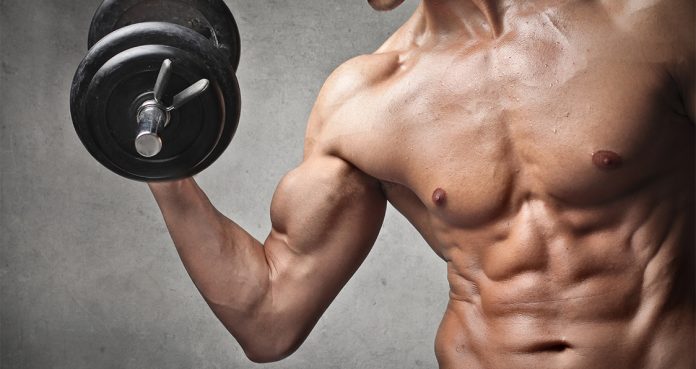
5 Ways To Integrate Powerlifting And Bodybuilding
5 Ways To Integrate Powerlifting And Bodybuilding.
The longstanding relationship between bodybuilding and powerlifting has generally been that of a healthy rivalry. But sometimes oppositional thinking can blind one camp to the benefits of the other.
Recently, powerlifting has become increasingly fashionable in the fitness community, and new athletes are rising who are skilled in both powerlifting and aesthetic training, among them are names like Stan Efferding, and Susan Salazar. The following are some of tips for incorporating powerlifting and bodybuilding.
1. Heavy weights, higher reps
Powerlifters prioritize neurological training, but hypertrophy work (6-15 reps) builds a foundation of actual muscle for that training, which is often neglected by powerlifters. Often the weakest link for powerlifter is not their ability to recruit muscular force, it’s the amount of muscle available for recruitment. Bodybuilders often forget that hard, dense muscle and serious thickness is built with heavy weight. He compares Ronnie Coleman and Phil Heath: one preferred lifting very heavy and the other didn’t. The difference is clear.
2. Exchange Movements
To the powerlifters, it’s important to to balance the body. A more complete muscular system will minimize injury, increase strength and mobility, and allow the body to optimally recruit firing patterns.
To the bodybuilders, include some compound movements. Low bar squats are one of the best hamstring and glute builders out there. Paused bench press gives your chest and triceps a completely different stimulation and leads to thickness and growth because you’re starting from a dead point in a different firing pattern. And things like sumo deadlifts can take a lot of pressure off the precious low back while being phenomenal lower body developers.
3. Exchange Rep Ranges
Most bodybuilders would benefit from occasionally lowering the rep range to 1-3. A more powerful neurological system will always be a driver of muscular gains.For powerlifters he recommends occasional sessions of over 15 reps. Increased blood flow pulls nutrition into the joints and stimulates growth in slow twitch fibers. It will also help powerlifters walk up long staircases without feeling out of breath.
4. Nutrition
For bodybuilders, we recommend increasing carbohydrate intake. Carbs help strength performance and can be added slowly and safely into any diet if monitored properly. If you care about strength performance, you need carbs. Powerlifters, by contrast, should have focus on proper macros. Just because strength is king doesn’t mean donuts don’t hurt. He recommends baseline of 1.2-1.5g of protein, 1.5-4.0g of carbs, and 0.3-0.6g of healthy fat per pound of body weight.
5. Strategic Periodization
If you want to compete in both sports, strategic programming must be employed year round. Obviously, one doesn’t want to be maxing out 4 weeks out from a show and you don’t want to be doing a ton of accessory volume 4 weeks out from a meet. Everything has it’s place in a strategic and balanced program.
What do you think of these 5 Ways To Integrate Powerlifting And Bodybuilding? Let us know in the comments below. Also, be sure to follow Generation Iron on Facebook and Twitter.

5 Exercises For Building A Cobra Back
5 Exercises For Building A Cobra Back.
Your back is the biggest muscle group after your legs. It can also be one of the hardest muscle groups to train since you can’t see your back directly in the mirror and hence it can be comparatively hard to establish a mind-muscle connection.
If done right, a good back workout should be as grilling as a brutal leg workout. You should be running on fumes when you’re done with your back workout. Building a cobra back can take a lot of effort, patience, and persistence. It is no surprise only a few people have a jacked back.
1. Pull-Ups – 50 Reps
You need to have a broad back if your goal is to build a shredded back. Pull-ups are one of the most efficient exercises when it comes to building a wide back and giving you a V-taper. Arnold performed 50 reps of this exercise at the beginning of his back workouts.
There are no fixed number of sets you need to complete these 50 reps in. Try to take as few sets as possible. As you get better at this exercise, you can start using weights to make it harder for yourself. If you’ve just started working out, use a pull-up assistance machine or ask for a spot from someone at your gym.
2. Deadlifts – 3 Sets 5 Reps
Deadlifts are a complete back builder. It’s a compound (multi joint) exercise which works your entire body. It is better to perform this exercise at the beginning of your back workout when you’re at your strongest.
You don’t need to do a lot of reps to get the most out of deadlifts. Lifting heavy weights with an explosive movement can get you better results. Deadlifts can help you gain muscle mass and strength which can make you stronger at every other exercise.
3. Dumbbell Bent Over Row – 3 Sets 12 Reps
While overhead pulling movements can add to the width of your back, rowing movements will add the much-needed thickness. You need to have a combination of both these movements to build a Cobra back.
Dumbbell bent over rows help isolate your back and will give you an incredible pump. Have a full range of motion to recruit all the muscle fibers in your back. Hold and squeeze your back at the top of the movement.
4. Lat Pull Downs – 3 Sets 12 Reps
Lat pull downs are incredibly effective at targeting your lats. Many people make the mistake of using momentum while performing this exercise. Make sure you don’t swing yourself and use momentum to lift the weights.
Try bringing the bar close to your chin while sitting straight. Hold and squeeze your lats at the bottom of the movement. Use lifting gear like straps to eliminate recruiting your forearms. Doing this will also help in lifting more weight and performing more reps.
5. Ground Pulley – 3 Sets 12 Reps
The ground pulley is a great exercise when it comes to developing a V-taper. Use weights you can comfortably lift for 12 reps. Lifting heavier weights can lead to leaning way too far at the bottom and the top of the movement.
Keep your reps slow and deliberate to completely annihilate your back. You can try variations of this exercise by using different handle bars. Each new grip will target your back from a different angle and will recruit different muscle tissues.
Which is your favourite back exercise? Let us know in the comments below. Also, be sure to follow Generation Iron on Facebook and Twitter.

This Is Why You Should Never Date A Bodybuilder
Reasons You Should Never Date A Bodybuilder.
The idea of dating a muscular man can be tempting. Having a big man around you can make you feel safe and secure. This is also the reason many men join a gym so they could get more girls.
Just like with most things, dating a bodybuilder can have its pros and cons. And in this case, the cons can be a little heavier than the pros. In the end, it is your decision to make.
1. You Don’t Like Making Food
No matter who you are or where you’re from, if you’re going to date a bodybuilder you should be ready for this. Diet is one of the most important aspects of bodybuilding, and no bodybuilder will ever compromise on it.
If you happen to find a lazy partner, you could end up cooking all his meals. Pro tip: if you’re starting to date a bodybuilder, give him no clue you can cook. Pretend as if you have no idea how it is done and you can spend the rest of your life in peace.
2. Bodybuilders Can Be Self Centered
Bodybuilding is a sport where an athlete has to focus on himself. This is where bodybuilders can end up being selfish and self-centered. It can be even more prominent if he is prepping for a contest.
Fitness athletes are known to skip family and friends time to work on their art. You should be ready if this happens to you. Let us break this for you, if you like having all the attention, things might not work between you two.
3. You Don’t Like Working Out
Having a ripped partner and being fit yourself are two different things. You can expect your better half to ask you to start working out. If you’re not into the fit lifestyle, it will be better to set the expectations from the beginning.
You will also have to bear with him if he’s always talking about the gym or if he’s spending most of his time in the gym. Some bodybuilders can tend to have a small world which revolves around fitness and staying in shape.
4. Protein Farts
It is no secret bodybuilders eat a lot of protein. Protein can also be one of the hardest nutrients for your body to digest, and this can lead to farts, protein farts. If you have no idea what we’re talking about, just google it.
Trust us; you don’t want to be anywhere near protein farts. And at the same time, you can’t ask or expect your better half to stop eating protein. This will be a part of your life, and you will have to live with it.
5. Steroid Use
If your boyfriend looks anything like the guys on the Mr. Olympia stage, he’s on steroids. This might come as a surprise to you since most bodybuilders don’t like to share this part of their lifestyle with the world.
If you have reservations about drug use, you should stay away from dating a bodybuilder. It is better to clear this out before you start dating a bodybuilder. Don’t be surprised if you still find out about it later after he has denied using it.
Have you ever dated a bodybuilder? Let us know in the comments below. Also, be sure to follow Generation Iron on Facebook and Twitter.
*Header image courtesy of Envato Elements
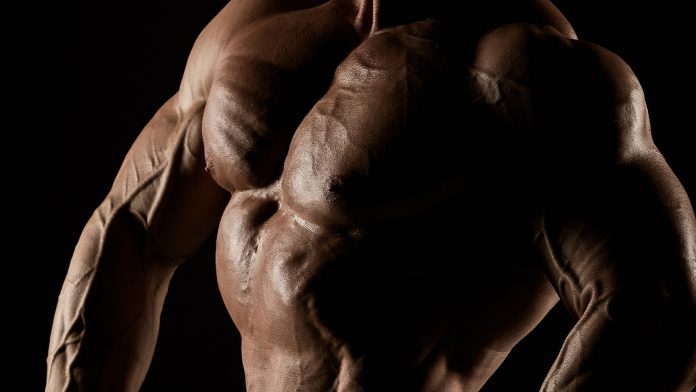
Train Lats For A Bigger Chest With This Workout
Want a bigger chest? Then get your back in order.
On the journey to building up the perfect pecs, most guys in the gym often focus on exercises associated with the chest. Seems pretty obvious that if you want to get your chest into fighting form then you’re going to have to perform exercises associated with the muscle group. It doesn’t take a rocket scientist to figure that out.
But guys will often times obsess on building the chest alone while neglecting some of the other important muscle groups associated with building a maintaining pecs that would make other guys jealous and make women swoon.
So what muscle group should be worked in order to get a bigger and better chest. If you read the title of this article then it’s a safe bet that you know it’s the lats. But why exactly will building up your lats prove to be the secret to building up a desirable chest? Well, there’s a theory of building up the opposing muscle group in order to see full development in the area you’re targeting. The opposing muscle group is essentially the opposite muscle group to what you’re hoping to develop. For the chest it’s the lat muscles.
Now if you have a man boob issue that you wish to be taken care of then you’re going to have to work your opposing back muscles to avoid your moobs from growing my prominent. Everything must be balanced. You obviously work your chest muscles to get the definition and muscle growth in your pecs and you work your back, specifically your lats, so that you have a more natural posture.
By only working your chest the likelihood of your shoulders hunching forward, making your chest muscles bunch together in a more narrow space will lead to you making your man boobs appear all the bigger. Working you lats will cause your posture to maintain more of natural position through your shoulders and allow your chest to spread for a wider and more aesthetic appearance.
Here’s a list of exercises to prioritize your chest and back.
Barbell Bench Press
3 sets, 5 reps
Incline Dumbbell Bench Press
3 sets, 10-12 reps
Dumbbell Flyes
3 sets, 10-12 reps
Deadlifts
3 sets, 3 reps
Pull Ups
5 sets, To Failure
One Arm Dumbbell Rows
2 sets, 20-25 reps
Try out this chest and back routine and let us know your results and be sure to follow Generation Iron on Facebook and Twitter.
Managing editor of Generation Iron, Jonathan Salmon is a writer, martial arts instructor, and geek culture enthusiast. He has been writing about bodybuilding, combat sports, and strength sports for over 8 years. Check out his YouTube, Instagram, Twitter, Facebook, and Sound Cloud for in-depth MMA analysis.
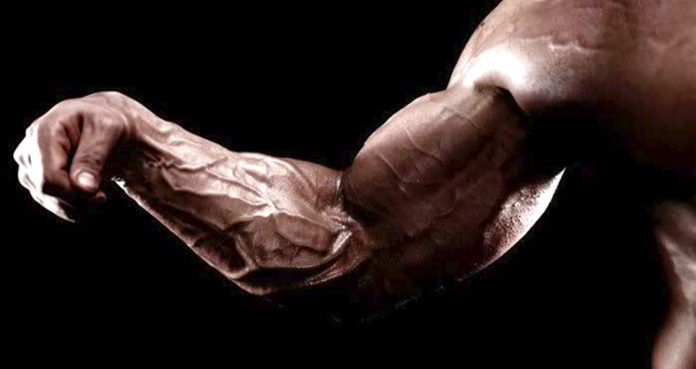
Get Popeye Forearms With These Simple Forearm Exercises
Get Popeye Forearms
Muscle symmetry is what separates the men from the boys. Bodybuilding is a game of illusions and having proportional muscle groups accentuates the size of your muscles. If competing is your goal, you need to train for symmetry and muscle balances.
Forearms are one of the most overlooked muscle groups. People usually train them as accessory muscles at the end of their arm workouts. It is no surprise these people have bulging biceps and skinny forearms.
If your goal is to have gigantic biceps and triceps, you can’t afford to skip training your forearms. While skinny forearms can make your arms look smaller, ripped forearms can add to the size of your bis and tris. Do these simple exercise to get Popeye forearms.
1. Farmer’s Walk
Farmer’s Walk is one of the most effective exercises to build muscle mass and strength in your forearms. Performing this exercise will make you stronger at other exercises where you need your grip strength. Farmer’s walk is a staple exercise in strongman training.
If you don’t have farmer’s walk black bars at your gym, you can use dumbbells for this exercise. Hold on to some heavy dumbbells and walk for as long as you can without dropping them. Challenge yourself to do more every other time you perform this exercise.
2. Barbell Finger Rolls
This is one of the most underutilized exercises for forearm development. Chances are, you would have never seen someone do this exercise, but you will be certain of its effectiveness once you do it yourself.
Hold a barbell with an overhand grip. Slowly roll down the barbell to the tip of your fingers. Return to the starting position, curl your wrist and squeeze at the top of the movement. You can also do a behind the back version of this exercise to isolate your forearms.
3. Cable Reverse Curls
Using a cable as opposed to free weights helps keep the tension on your target muscle group throughout the movement. While using dumbbells you have tension on your muscle on the concentric part of the motion but there is no tension on the eccentric part.
Cable reverse curls can help with building the top of the forearms and the outer biceps. Since this exercise can recruit your biceps, you need to make sure you’re performing it with complete control. Keep the reps slow and deliberate to exhaust your forearms.
4. Wrist Curls
Wrist curls are probably the most common forearms exercise performed in gyms around the world. If you have lagging forearms you should perform these exercises at the beginning of your workouts. This will help in recruiting your forearms in every exercise you do later in the workout.
Sit and the side of a bench and place your forearms on the bench with only your wrist hanging off. Hold a barbell or dumbells with an overhand grip with your thumbs over the barbell. You can also perform the underhand variation to target the inner forearms.
5. Cable Overhand Inward Wrist Curls
Cables can be incredibly useful at annihilating your forearms. Cable overhand inward wrist curls will isolate your forearms and will fill them with lactic acid by the end of the exercise. For this exercise, sit on a flat bench with your forearms parallel to each other placed on your thighs.
Attach a straight bar handle to the pulley and sit at a distance where the weights don’t rack at the bottom of the movement. Curl your wrists inwards towards your knees and squeeze at the top of the movement.
Which is your favorite forearm building exercise? Let us know in the comments below. Also, be sure to follow Generation Iron on Facebook and Twitter.
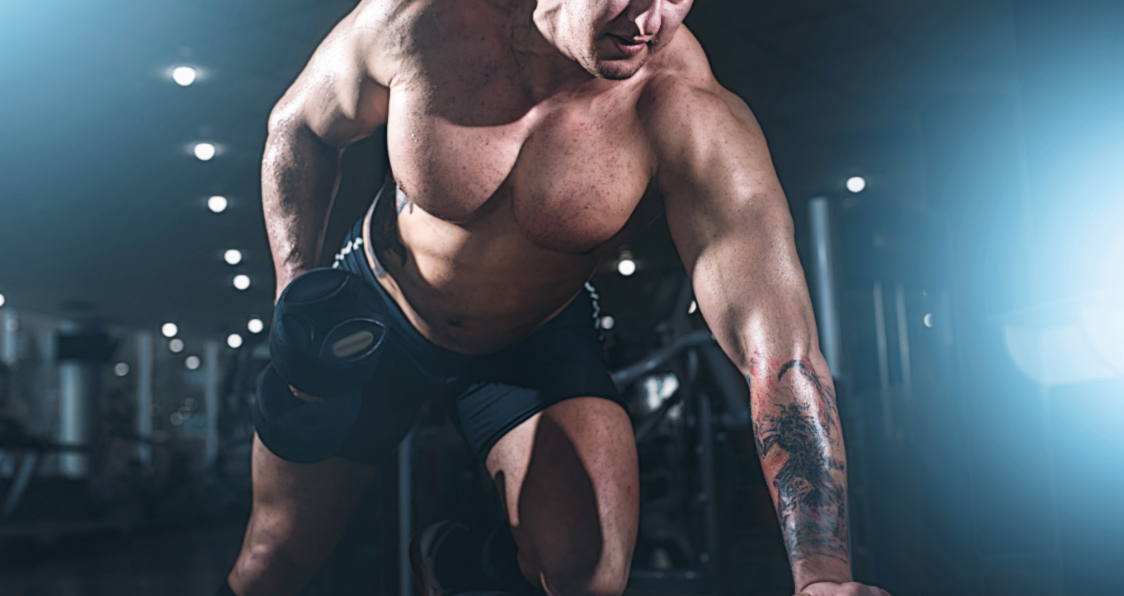
Can’t Afford The Gym? Try The Jailhouse Method
Insane gains the prison way.
In this day and age gyms are more pricey than they’ve ever been before. Many people wish to get into shape and make some serious gains, but their lack of funds keep them from being able to get into the gym and achieve their fitness goals. It can be a bit depressing knowing that you want to make a change, but can’t manage to because of economic interference.
So does that mean you might as well give up and forget about ever making some serious improvements on your body? Hell no! Though machines in the gym do help a great deal in getting your body into ripped and massive condition, that doesn’t mean you can’t make some development without them. When the tools are lacking for the task at hand, the next step is to innovate and do the next best thing. Workout without them.
This is where the concept of the prison workout can help a great deal in improving your physique. For the incarcerated, there aren’t a bunch of fancy machines or dumbbells lying around. For them to improve their strength, muscle endurance, and physique, they must rely on bodyweight exercises to make the difference. So what would a prison workout consist of? For the most part the exercises consist of pushing and pulling motions that will thrash your muscle into shape. We have a list of some prison inspired exercises that are sure to make all the difference to your routine with or without machines.
Upper Body Workout
There are a number of push up and pull up variations that are sure to work your chest, triceps, back and even your core. The key to building up a strong upper body is variety, consistency and attacking different muscle groups with the same intensity. This list of push up and pull up variations will add some variety to your routine and ensure that your muscles are attacked from multiple different angles.
Diamond Push Ups
3 sets, 20 reps
Wide Grip Push Ups
3 sets, 20 reps
Chin Ups
3 sets, 10 reps
Wide Grip Pull Ups
3 sets, 10 reps
Lower Body Workouts
The lower body workout routine is likely to look fairly similar to what you would see in the gym. The lack of weights to give added resistance is a bit of a hurdle to get around, but in exchange for the usual weighted variations, the focus should be on muscle endurance. By the time you’re ready to do a weighted squat the muscle endurance will aid you in pushing some weight.
Body Weight Squat
4 sets, 20 reps
Lunge
4 sets, 10 reps
Calf Raises
4 sets, 25 reps
But you’re still looking to build up muscle then having a training partner for these exercises can be a huge help. For instance, you can have your partner sit on your shoulders during a squat or on your back while doing a calf raise variation (donkey calf raises). They may be a bit more difficult to pull off, but if you’re in a tight situation it should do the trick for muscle growth.
Would you ever use the body weight workout in a bind? Let us know in the comments below and be sure to follow Generation Iron on Facebook and Twitter.
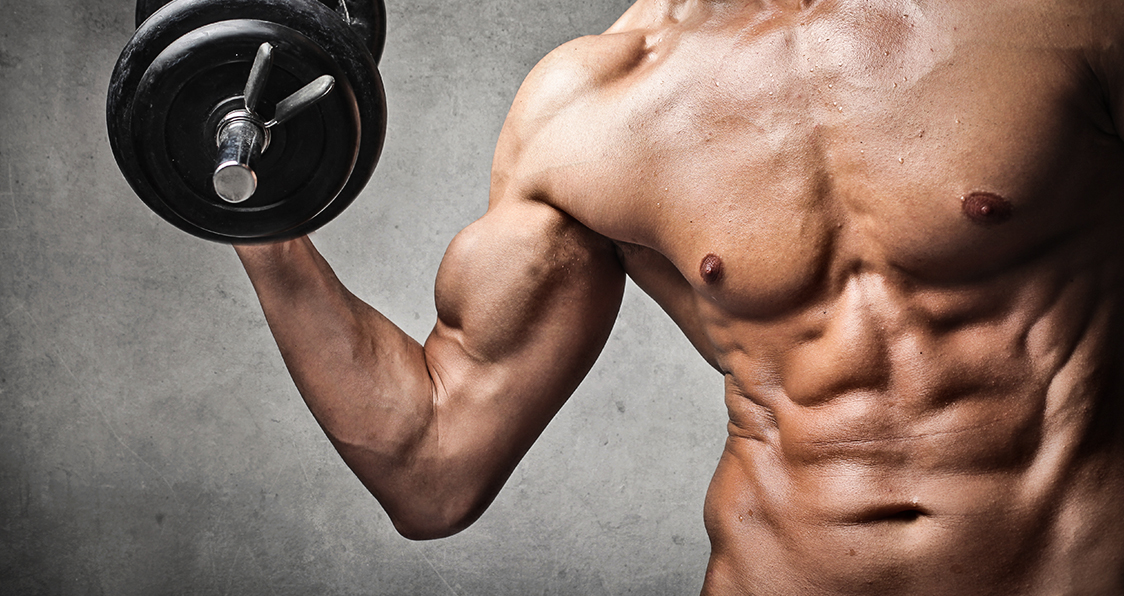
The Secret To Overload Training
Time to push your training over the edge and into the next level.
When your typical training routine just isn’t cutting it, you can always count on Generation Iron to bring you something to freshen things up a bit. Overload training is a great method to get some gains without just completing the typical three sets of ten reps basic program. Overload training is great for building strength and putting on mass as well. Overload training forces your body to get used to the increased effort and stress you put your body through in order to increase hypertrophy. But how exactly do you go about overload training? We’ve got you covered.
1. Form and ROM
First thing’s first. When it comes to overload training you have to make sure your technique is in tip top form. Things like form and rang of motion don’t really sound sexy, but neither do the words slipped disk. Injury is the enemy of gains and if you want to to make some you’re going to have to get your technique down when it comes to lifting. Once you’ve perfected the mechanics of a lift then practicing to obtain full range of motion will be the next priority. This will enable you to attack a muscle group from all different angles and activate all the muscle fibers you’re looking to attack.
2. Increase Volume
Once your form is clean then the logical next step is to increase the amount of reps and/or sets. By now your body has gotten used to the weight that you’ve been hauling. The pump that you used to experience has slowly begun to fade away and you’re feeling like you’ll never experience it again. Don’t put down those weights quite yet. Up the volume on your lifts and you’ll find yourself not only experiencing hypertrophy, but building strength and muscle endurance as well.
3. Increase Weight
You can’t just rely on increasing your reps to get bigger. There’s going to come a time when you’ll have to up the weight you’re lifting. But this doesn’t mean you should go from 75 lbs dumbbells to 200 lbs. Instead you’ll be lifting a higher amount of weight and decreasing the volume. Say you’re pushing 225 lbs on the bench for 10 reps, increase the weight to 250 lbs and perform 8 reps. Then up it to 275 lbs and 6 reps and so on until you reach your one rep max.
4. Intensity
It’s gotta be said. If you want to see some major changes in your physique then you’re going to have to train hard. The intensity of your workout has a part to play in the amount of muscle you’ll pack on from training. This is where the form, the increased volume, and increased weight comes into play. Combining all these factors as well as performing the same amount of reps/sets in a shorter time or a greater amount of reps in the same amount of time for an average lifting regimen will in affect make for a more intense workout.
5. Frequency
The amount of time you work a muscle group per week is also important to getting the full benefit from overload training. If you’re one of those hit the gym three times a week kind of guys then you’re going to have to change things up for overload training. Get in the gym five days a week so that you’re constantly training a muscle group on each day of the week. There’s nothing better than consistency when it comes to training.
What are your thoughts on overload training? Let us know in the comments below and be sure to follow Generation Iron on Facebook and Twitter.
- 1
- 2
